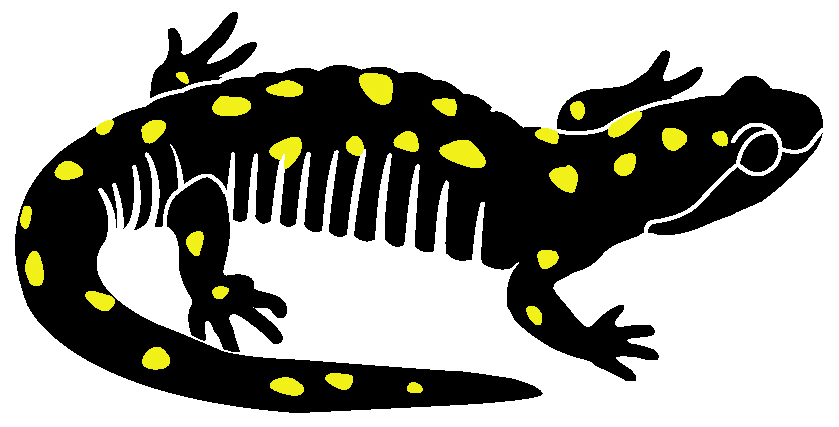Fairy Shrimp
Eubranchipus spp.
Fairy shrimp are small (.5-1.5"), orange to green, delicate-bodied crustaceans that live only in vernal pools. They swim “upside down” through the water, rhythmically beating their abdominal appendages which also serve as respiratory structures. When viewed from above, their sometimes white forked tail may make them noticeable. They may move slowly, dart quickly, or even remain stationary as they filter bacteria, phytoplankton, protozoans and detritus. Mature females have a brood pouch evident at the base of the abdomen, while males appear to have an enlarged head due to claspers used in mating.
Two species of fairy shrimp are confirmed from MA. Eubranchipus vernalis is common and widespread, while the intricate fairy shrimp, E. intricatus, is a state-listed rare species known from only a few sites. They can be differentiated by examining the heads of mature males under a hand lens. E. intricatus has a pair of long, often curled, antennal appendages which reach to the end of the claspers. The antennal appendages of E. vernalis are quite small and inconspicuous (see diagram).
Female fairy shrimp produce several broods of encysted eggs which must dry and be re-submerged before they will hatch. Hatched larvae develop quickly into mature adults which reproduce several times.
The drought and cold resistant cysts withstand ingestion by animals, may be blown by wind from a dry pool, or carried along with mud or plant matter. The rapid development and reproduction of fairy shrimp places their activity period in a vernal pool at a time (winter and early spring) when there are few predators present. Fairy shrimp die off as the pool temperature reaches 50° F.

The antennal appendages of E. vernalis are quite small and somewhat inconspicuous. They droop down between the two large claspers.

E. intricatus has a pair of long, often curled, antennal appendages which reach to the end of the claspers. The appendages are quite large in comparison to E. vernalis.


Fairy shrimp in a vernal pool. Their orange body and white forked tail provide contrast making them easily visible. Their color may range from orange to green.

Vernal pool fairy shrimp, Eubranchipus vernalis. The male (upper right) has large clasper on his head. The mature female (lower left) has a brood pouch at the base of her abdomen.

Male intricate fairy shrimp, Eubranchipus intricatus. The intricate fairy shimp is known from less than 30 locations in Massachusetts. More information is needed on its distribution.

Fairy shrimp filter bacteria, phytoplankton, protozoans and detritus from the water as a food source. Here two fairy shrimp are using the abdominal appendages to scrape detritus off the pool bottom.

